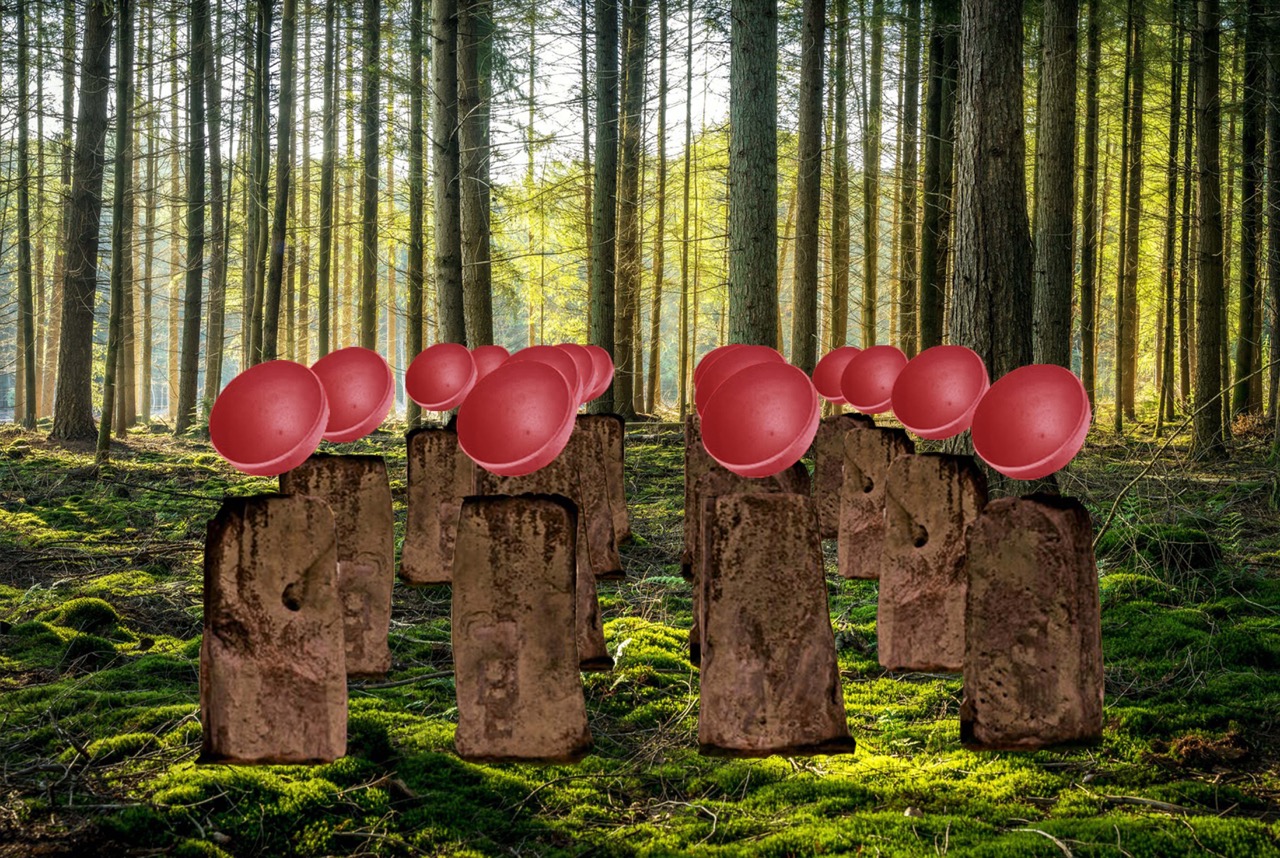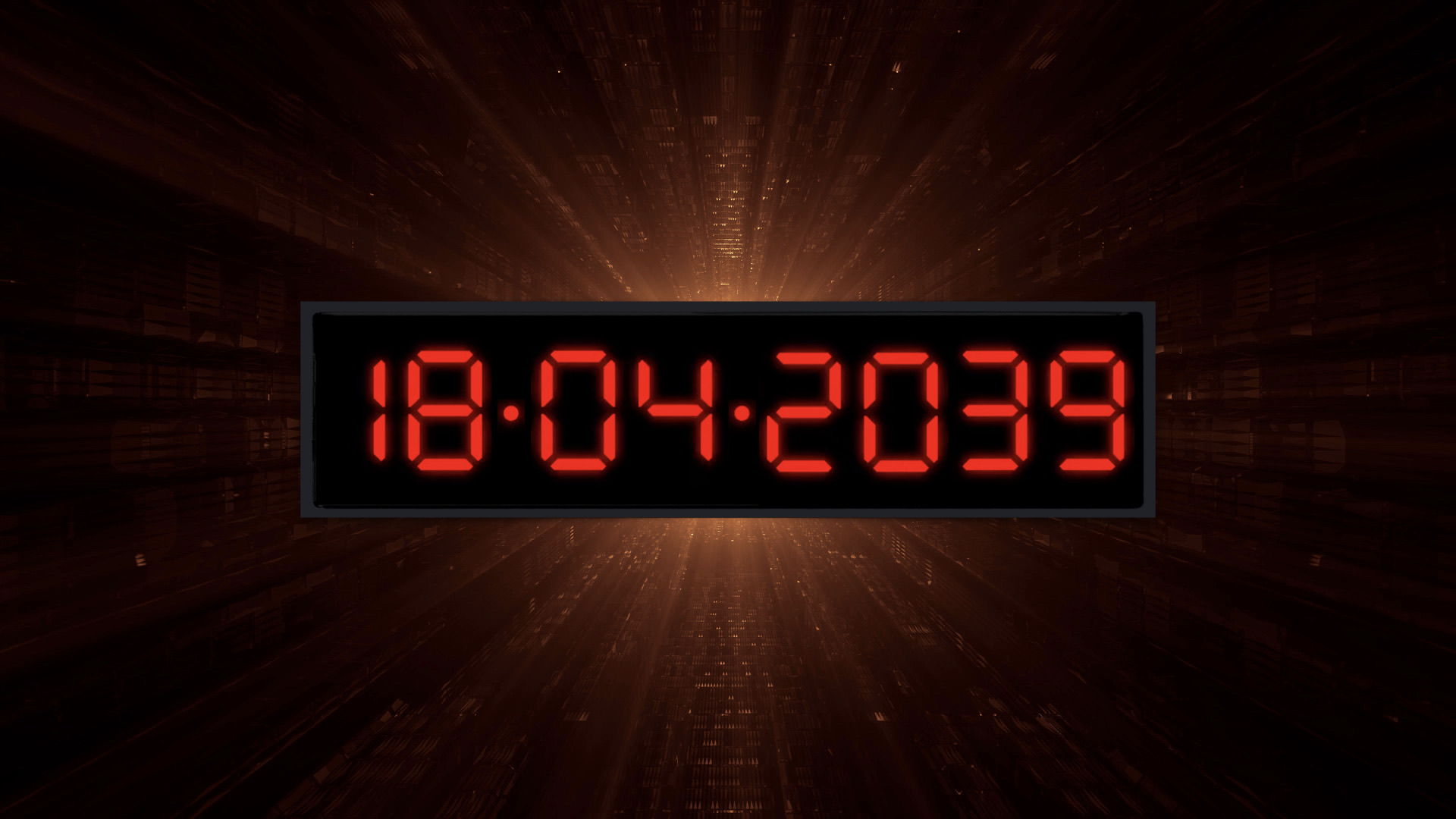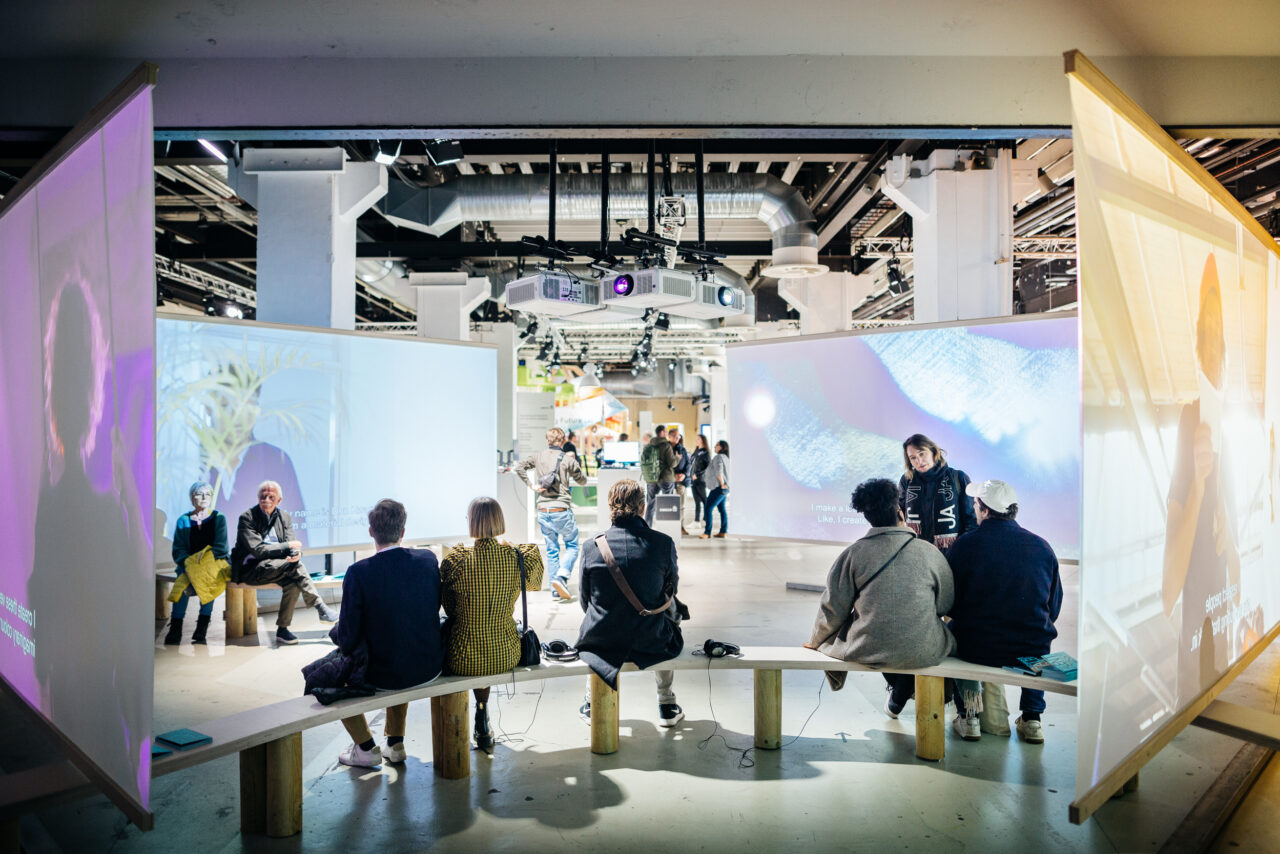How will we stay healthy in the future? And what makes a society healthy? At this years Dutch Design Week the Embassy of Health investigates how we can utilize the power of design to move towards a more healthy society. From hospitals to housing corporations, the embassy advocates for a collaborative approach towards the changes needed for a society that is chronically healthy. We caught up with the curator Marleen van Bergeijk to discuss the steps to take.
Tell us about this year's Embassy of Health.
This will be the sixth edition of the Embassy of Health within World Design Embassies. Over all these year’s we embrace the overarching theme of Chronic Health, each year exploring it in a different way. This year, the Embassy of Health will focus on how and especially which mindset contributes to moving towards a chronically healthy society.
How do we change our attitude towards health? It’s time that we look for other routes and perspectives to make society healthier and prevent healthcare from becoming too expensive and unattainable. We know what is coming our way, and we feel the pressure on the labor market, on the waiting lists and on our wallets. However, it’s hard to change the reality. It requires adjusting our way of thinking, acting and working together.
How can we continuously learn from different voices in society and how can we learn from nature, the greatest adaptor of all?
In this year’s exhibition we shine light on the mindset behind the concepts, projects and installations that you can experience. What mindset helps to collaboratively come to solutions that benefit our health, now as well as in a further future? How do we stay adaptable when challenged with new societal shifts like a pandemic? How can we continuously learn from different voices in society and how can we learn from nature, the greatest adaptor of all? In the exhibition we have embodied these conditions for change, that you can experience spatially as you explore the different projects.
Our health cannot exist without taking care of the planet we inhabit, how nature nourishes us and how we should treat it equally.
We are situated in a hall in the Klokgebouw (that we shared with the Embassy of Food among other DDW participants) where you will find a landscape of projects addressing the topic of planetary health. I am quite happy we get to be part of this larger narrative as we cannot and must not solely focus on human health. Our health cannot exist without taking care of the planet we inhabit, how nature nourishes us and how we should treat it equally. This responsible attitude is one of the factors we address in our narrative on the mindset. You can find our full narrative here.
What is the embassy's vision on design for health?
Our main, overarching vision on health, vitality and well-being (note: not wellness, there is an important difference) is that of Chronic Health. With Chronic Health we aim for a positive approach towards our health and well-being. The focus on achieving health rather than combating disease leads to other ways of approaching health in society. It’s a term that opens up new routes and perspectives. Placing the emphasis on preventative health rather than curing doesn’t mean health will be without challenges, but it makes for a positive approach that focuses on how - despite being challenged be it physically, mentally, socially - someone can participate in society.
Can you highlight some projects from the upcoming exhibition?
Monument of M/otherhood designed by Lisa Mandemaker with DesignLab Twente:
It’s the year 2088. Babies are now fully gestated in artificial wombs (AW). On their 18th birthday, people who were born from an AW get a chance to visit a monument that displays a part of the machine in which they were gestated. The visit to the monument marks an important life event because several people have reported strong connections, memories, or even feelings towards these machines. The monuments make it possible to witness and re-connect to the machine ‘that gave you life’. The aim of this speculation is to spark new ideas about future families beyond a family tree, new kinship, and the feeling of being part of something bigger than yourself. In the exhibition people can stand under the arch of the monument and experience what it is to connect to a piece of technology that gave life, using all of their senses.

Data Donor Club designed by De Reuringdienst with Ams-ix:
Personal health data can be a great indicator for preventative health care, especially when compared to collective health data. However, the way we exchange and handle data nowadays, is mostly focused on stimulating consumerism. Ams-ix (the Amsterdam internet exchange) propose a new way of exchanging data by changing the fundaments of how we structure our data traffic. A transparent, privacy-friendly way of exchanging data where you as a person or organization have a say in who is able to use your personal (health) data and for what purpose.
Who is responsible for the health of a citizen?
Design studio De Reuringdienst has translated their vision into an interactive installation. Welcome to the Data Donor Club. Like donating your organs for the greater good, you could look at donating health data for the greater good. What choices do you have, where can data end-up? What terms do agree to and what influence do you have? You can find out when you sign-up for the club at Dutch Design Week.
Health Overshoot Day designed by Studio Marleen van Bergeijk x Studio Sociaal Centraal with Máxima MC i.c.w. Trudo:
Máxima MC and Trudo explore what role a hospital and social housing corporation can play in the health and vitality of citizens in their shared exploration ‘Expeditie VitaalGezond’. For this year’s Dutch Design Week, they have developed a speculative, immersive installation that addresses the urgency to look at health(care) and vitality in a different way as health care costs are rising and people working in care are limited. It sparks the discussion: who is responsible for the health of a citizen?
If we were to divide the limited care available in 2034 equally among all Dutch citizens, what would it look like?
The concept Health Overshoot Day, that marks the fictional date on which the demand for support in health and vitality is higher than society and the healthcare system can provide within a person’s lifespan. If we were to divide the limited care available in 2034 equally among all Dutch citizens, what would it look like? On their 50th birthday citizens receive an invitation to calculate their personal Health Overshoot Day (HOD). This will calculate, based on their health data, from what moment on the state can no longer provide for their care. The calculation takes into account your lifestyle, zip code, general health prospects based on DNA and gender. In addition to the measurements, the citizen will receive tools for reflection to see how they can influence their Health Overshoot Day.

How does the Embassy move past traditional understandings of the human in healthcare?
I feel in the EoH we have a broad and curious mindset as to how technological developments like AI and DNA manipulation can influence our health and how we can draw inspiration from processes of adaptation and recovering in nature. With the human quest or maybe even addition to makability I think it’s vital not to lose track of the entire eco-system. Both the human, social eco-system as well as the natural eco-system of species of on Earth, of which we are just one out of millions.
Do we focus on the future of humanity or futuristic humanism?
We can develop to become advanced superhumans with little to no challenges in our physical health, yet what about the environment we live in? As we explored in one of our earlier narrative: do we focus on the future of humanity or futuristic humanism? The projects you find in the Embassy of Health are exploring different scenarios on different timelines, which poses questions like how do we want to go about approaching health in relation to our technological and our (social) environment.
How do you define healthy in todays (and tomorrow's) society?
Health for me is something that transcends the individual as well as the human perspective. We need to think in eco-systems, as they are vital to the flourishing of our health. Next to this I think it’s important to focus on mental and social health parallel to and in interaction with our physical health.
How do we define health? Is health measurable?
When working towards a society that focuses on promoting health rather than curing disease, how do we define health? Is health measurable? Should it be measurable to make it work? It’s pretty easy to keep track of medical interventions and their effects, yet showing you prevented something from every being there is a little bit more complex. It makes you wonder, should we focus on technology that predicts the risks and potential diseases in our DNA set and how we can prevent these from progressing, or do we focus on measuring health levels in the moment? Is measuring done by an external, objective data-set or is it something we do ourselves by actually listening to sensations in our bodies? It’s interesting to see how these possible future scenarios of structuring health(care) and the technology involved influence our social dynamics and vice-versa. It’s something that is explored and make experienceable in different installations in the Embassy.
How does the Embassy of Health address the expense of healthcare?
For our society to truly make a shift towards preventative health, we should also consider and actually try-out new ways of financing health. It’s quite tangible these days that our healthcare system is untenable, the costs are rising and we need more and more people to deliver the care if we go about the way we structure healthcare like we do now.
Initiatives like a hospital working together with a housing cooperation to explore their role in preventative health outside of the hospital walls makes me feel hopeful.
It’s a complex system that grew organically over the years so it will take time and experimentation to try new ways of achieving health (over curing disease) in a societal system and economy. Therefore initiatives like a hospital working together with a housing cooperation to explore their role in preventative health outside of the hospital walls makes me feel hopeful. In the context of our narrative about mindset, it’s great that our partners all embrace methods of experimentation and using design to imagine and try-out these possible futures.
Whose responsibility is health?
This is an interesting as well as a layered question. In today’s society health is influenced by two codes, our DNA and our zipcode, and a little bit of luck. The largest factor? Our zipcodes! Where and how we live accounts for 70% of our health, our genes 15% and the other 15% is luck. Where and how we live is something we cannot fully control as individuals. When your budget is low you might live an apartment next to a busy, polluting road and you have trouble buying fresh produce. Let alone have enough time and energy to prepare a nutritious meal at the end of a stressful day. Health knowledge might be limited and passed on to the next generation.
It takes the effort of our government and our systems to have access to healthy options, knowledge and living environments.
I think again thinking in terms of an eco-system is helpful in achieving health in a broader sense. It takes the effort of our government and our systems to have access to healthy options, knowledge and living environments. On the other hand individuals and communities can make steps towards health and vitality, yet all in their own way. Therefore it’s important to focus on multiple solutions and pathways of achieving health. One of our partners, Philips Design, shows how access to maternity care works in two different context, comparing the Netherlands and Africa. The same care is necessary, yet how the solutions are offered and how the different organizations collaborate differentiate in every local situation.
How do you use social design for social problems?
Social design in this collaboration is used in a speculative way. With social design the focus is on having tools and interventions that allow people to participate in the process of working towards solutions for a societal problem. For instance including the people’s need, ideas, frustrations and skills into the process of generating health solutions in the neighborhood.
I think to take care of health, be it your own, some one near you or that of the nature around us, takes time.
For the project between Studio Marleen van Bergeijk & Studio Sociaal Centraal for Máxima MC and Trudo we made a physical representation of a possible future. It’s a future that is a little bit controversial and maybe even a bit dystopian. It allows us to discuss where we don’t want things to go, but what would be a good alternative? Why do we feel unease with where we might be heading, how could we prevent this? In the scenario we address the individual as well as the collective responsibility towards preventative health.
What else do you hope to see for the future of health?
I hope we can let go of our human obsession with efficiency. I think to take care of health, be it your own, some one near you or that of the nature around us, takes time. It’s something we can and should connect with, there’s no quick fix.

Share your thoughts and join the technology debate!
Be the first to comment